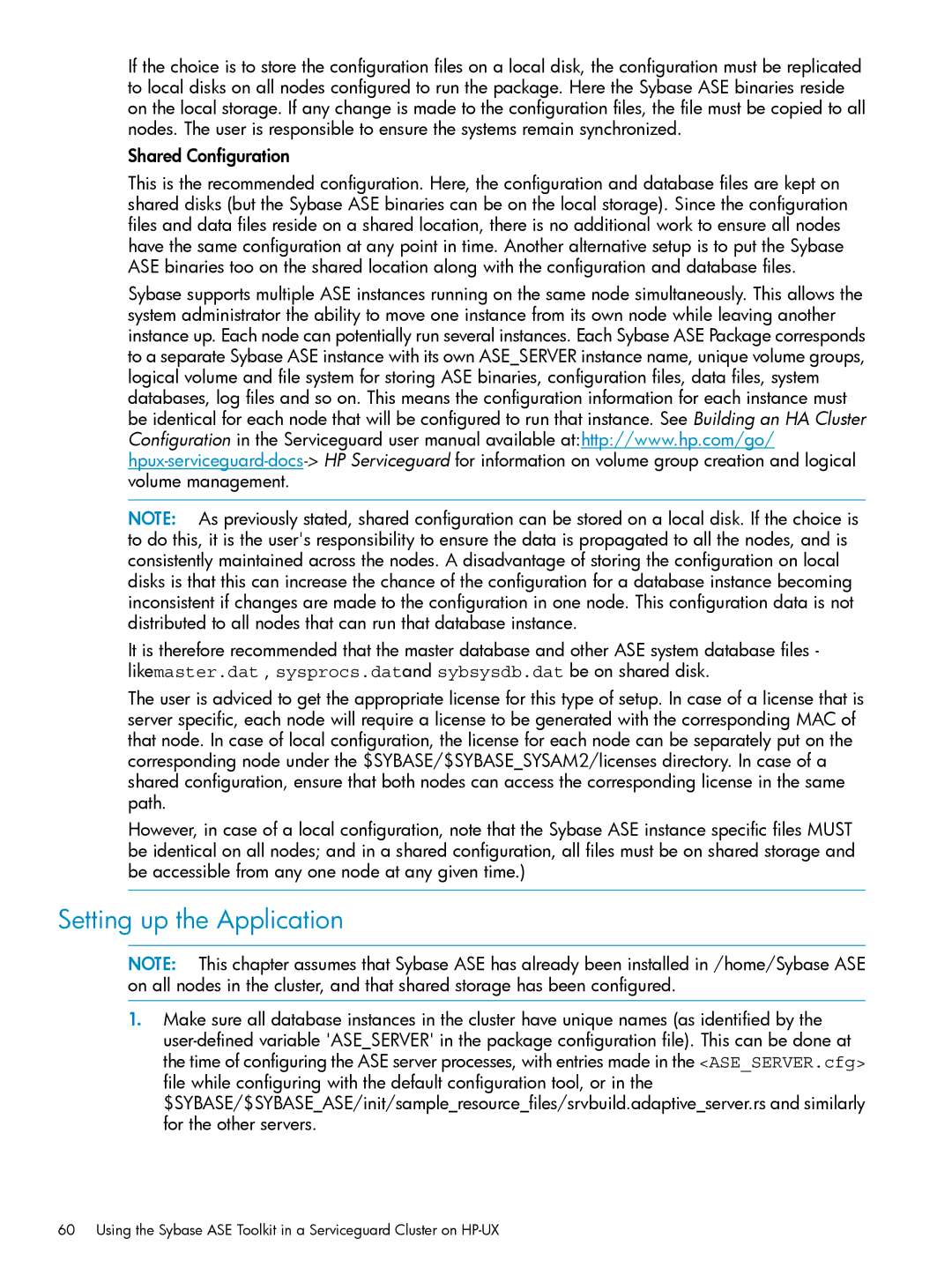
If the choice is to store the configuration files on a local disk, the configuration must be replicated to local disks on all nodes configured to run the package. Here the Sybase ASE binaries reside on the local storage. If any change is made to the configuration files, the file must be copied to all nodes. The user is responsible to ensure the systems remain synchronized.
Shared Configuration
This is the recommended configuration. Here, the configuration and database files are kept on shared disks (but the Sybase ASE binaries can be on the local storage). Since the configuration files and data files reside on a shared location, there is no additional work to ensure all nodes have the same configuration at any point in time. Another alternative setup is to put the Sybase ASE binaries too on the shared location along with the configuration and database files.
Sybase supports multiple ASE instances running on the same node simultaneously. This allows the system administrator the ability to move one instance from its own node while leaving another instance up. Each node can potentially run several instances. Each Sybase ASE Package corresponds to a separate Sybase ASE instance with its own ASE_SERVER instance name, unique volume groups, logical volume and file system for storing ASE binaries, configuration files, data files, system databases, log files and so on. This means the configuration information for each instance must be identical for each node that will be configured to run that instance. See Building an HA Cluster Configuration in the Serviceguard user manual available at:http://www.hp.com/go/
NOTE: As previously stated, shared configuration can be stored on a local disk. If the choice is to do this, it is the user's responsibility to ensure the data is propagated to all the nodes, and is consistently maintained across the nodes. A disadvantage of storing the configuration on local disks is that this can increase the chance of the configuration for a database instance becoming inconsistent if changes are made to the configuration in one node. This configuration data is not distributed to all nodes that can run that database instance.
It is therefore recommended that the master database and other ASE system database files - likemaster.dat , sysprocs.datand sybsysdb.dat be on shared disk.
The user is adviced to get the appropriate license for this type of setup. In case of a license that is server specific, each node will require a license to be generated with the corresponding MAC of that node. In case of local configuration, the license for each node can be separately put on the corresponding node under the $SYBASE/$SYBASE_SYSAM2/licenses directory. In case of a shared configuration, ensure that both nodes can access the corresponding license in the same path.
However, in case of a local configuration, note that the Sybase ASE instance specific files MUST be identical on all nodes; and in a shared configuration, all files must be on shared storage and be accessible from any one node at any given time.)
Setting up the Application
NOTE: This chapter assumes that Sybase ASE has already been installed in /home/Sybase ASE on all nodes in the cluster, and that shared storage has been configured.
1.Make sure all database instances in the cluster have unique names (as identified by the
60 Using the Sybase ASE Toolkit in a Serviceguard Cluster on
